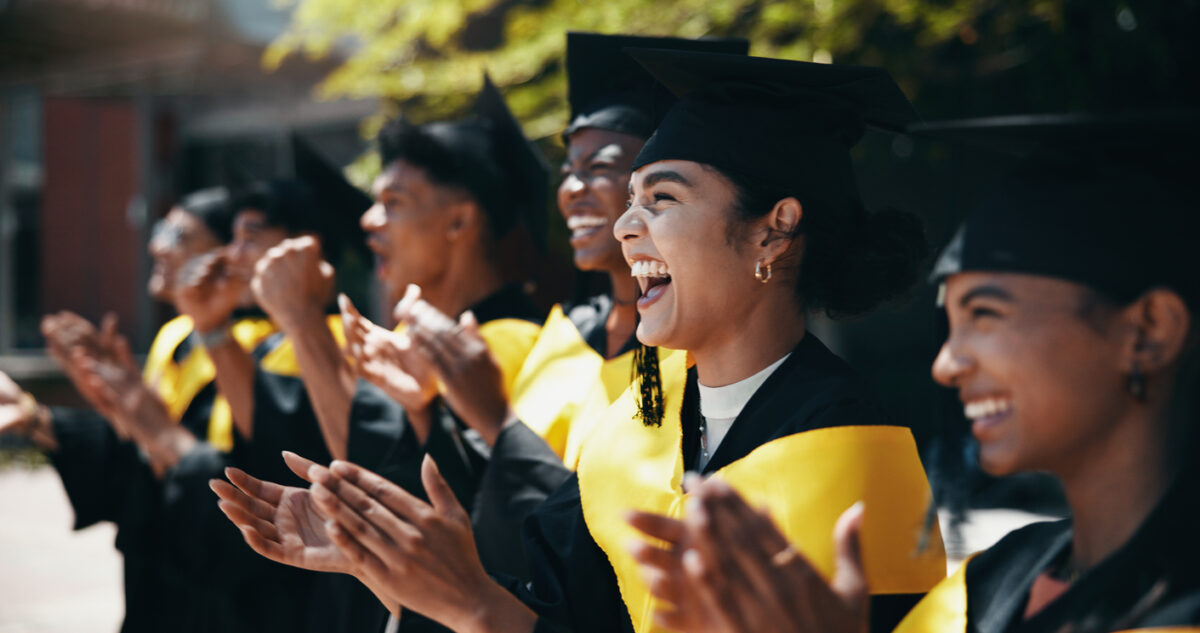Creating Role Models for Change
Published May 15, 2014
Washington, D.C., May 23, 2000—A new national survey of recent Tribal College graduates shows dramatic successes in employment, salaries, and advanced degrees, reinforcing the central role and success of these colleges in transforming disadvantaged American Indians into successful community leaders and role models.
The survey, the first-of-its-kind, shows that 91% of 1998 Tribal College and University grads are working or attending college one year after graduating, despite the exceptionally poor reservation communities and scarce opportunities for American Indians. The successes also come despite 40% less funding for the Tribal Colleges than for mainstream community colleges (most of the Tribal Colleges are two-year community colleges). The survey shows that many of the jobs Tribal College grads are taking are in areas of “high need” within their own communities, especially teaching and health care, and that grads are also becoming role models on the reservations.
This study comes at a time when federal interest in American Indian education is perhaps at an all-time high in recent memory, due to the priority attention placed by the Clinton Administration in coordinating private and public funding and support for American Indian policy initiatives, including internet technology, economic development, teacher training, and infrastructure. Facing a history of systemic and unprecedented failure in higher education, American Indians have had lower levels of educational attainment than any other ethnic or racial group. In 1990, only 66% of American Indians had a high school education and only 9% had graduated from college.
This survey shows graduates of the nation’s 33 Tribal Colleges are, on average, female (74%), unmarried (55%), 34 years old (7 years older than the average community college graduate nationally), and largely first generation college-goers. The study indicates that Tribal Colleges play a critical role in helping struggling single mothers, since 72% of unmarried female students at these colleges have children.
The survey results reveal a variety of successes by Tribal College grads:
- Employment: 91% of Tribal College graduates are working or attending college one year after graduating; the employment rate for the graduates one year after graduation is 74%, virtually the same as that for all community college degree recipients nationally, who typically have access to far more opportunities. By comparison, the unemployment rate among American Indians overall on Tribal College reservations averages 55% (1997 data).
- Advanced Education: In the year after receiving their degree, 48% of Tribal College graduates go on to further education while only 31% of all community college degree recipients do so. Overall, more than 80% of those continuing their education are seeking a BA degree.
- Salaries: The median salary for Tribal College graduates in full-time jobs is $18,444, despite working in regions of very low income and few economic opportunities. Overall, median household income levels on reservations on which Tribal Colleges are located were about half the median household income level for the U.S. population (1990 data).
- Occupations: 16% of those working enter the health care field and 13% pursue teaching, both areas of great need and shortages in reservation areas. 24% work in office manager/clerk jobs.
- Further Education Fields of Study: 27% pursue business/management, 20% study teaching, and 11% study computer science.
“These findings confirm the central role that these colleges play in American Indian higher education,” said David Gipp, President of the American Indian Higher Education Consortium and President of United Tribes Technical College in North Dakota, “and the unique nature of Tribal Colleges in integrating tribal values along with academic and technical excellence, which allows students to achieve success despite starting out in the most impoverished regions in the nation.”
The survey also found very high levels of satisfaction by Tribal College graduates in their own college’s instruction, curricula, faculty, and overall college experience. Tribal Colleges provide two-year, associate degrees for the vast majority of graduates.
The study, “Creating Role Models for Change: A Survey of Tribal College Graduates,” was conducted by The Institute for Higher Education Policy, a non-profit education research group, the American Indian Higher Education Consortium (AIHEC), and the Sallie Mae Education Institute. The study is the third in a series under the Tribal College Research and Database Initiative, sponsored by AIHEC and the American Indian College Fund.


